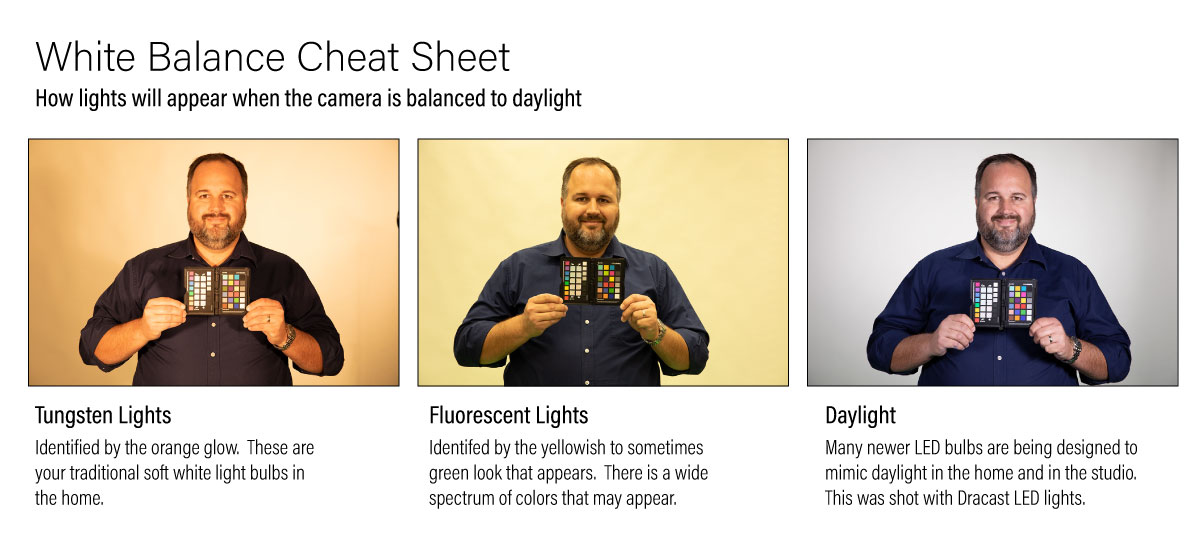- Questions?
- Contact
What is White Balance
White Balance is how the camera perceives white light in the image. If you’ve ever been to the lighting aisle in the hardware store, you’ve been confronted with different temperatures of light—some are cool white, soft white, fluorescent, etc. Each of these lights can be measured on a Kelvin Color Temperature Scale to demonstrate the color they will appear when photographed.
Kelvin Color Temperature

Using the above scale, most cameras render daylight as 5200K. This is a warm light, that is pleasing the eye and makes the skin tones look good.
Going from warm to cool we start with tungsten lighting at 3200k. These are you indoor light bulbs, generally labeled as “soft white” light bulbs. Tungsten lights are also known as hot lights, as these generate a lot of heat in the studio. With the advent of bi-color LED lights, the use of tungsten lights is slowly fading.
The next stop on the Kelvin scale is fluorescent lights at 4000k. These lights appear green when the camera is set to daylight. Unfortunately, these lights can be tricky to work under. There are many different shades of fluorescent in the consumer market, and they can be a nightmare when trying to color correct.
Cloudy and shade settings, 6000k and 7000k respectively, tend to look similar. These are situations where the light appears cooler to the camera and needs to be warmed slightly.
Working with Color Temperature
Now, knowing the individual kelvin temperatures and corresponding light is not as important as understanding the concept that the camera needs to be adjusted to deal with each individual lighting setting.

The easiest way to adjust the camera is to set it for Automatic White Balance and forget it. This will work for 80% of your shooting situations. Places where it may fail, are when you have colored lights on your subject, or if you’re trying to achieve a creative effect. Also, I’ve personally come across issues when shooting video and the camera adjusting the color temperature mid-shot when panning in a hallway. So, in this situation, I would choose to set the white balance before the shot and make adjustments in post-processing.
Kelvin Light Scale image from: “Color Balance” by Wikipedia is licensed under CC BY SA 4.0

